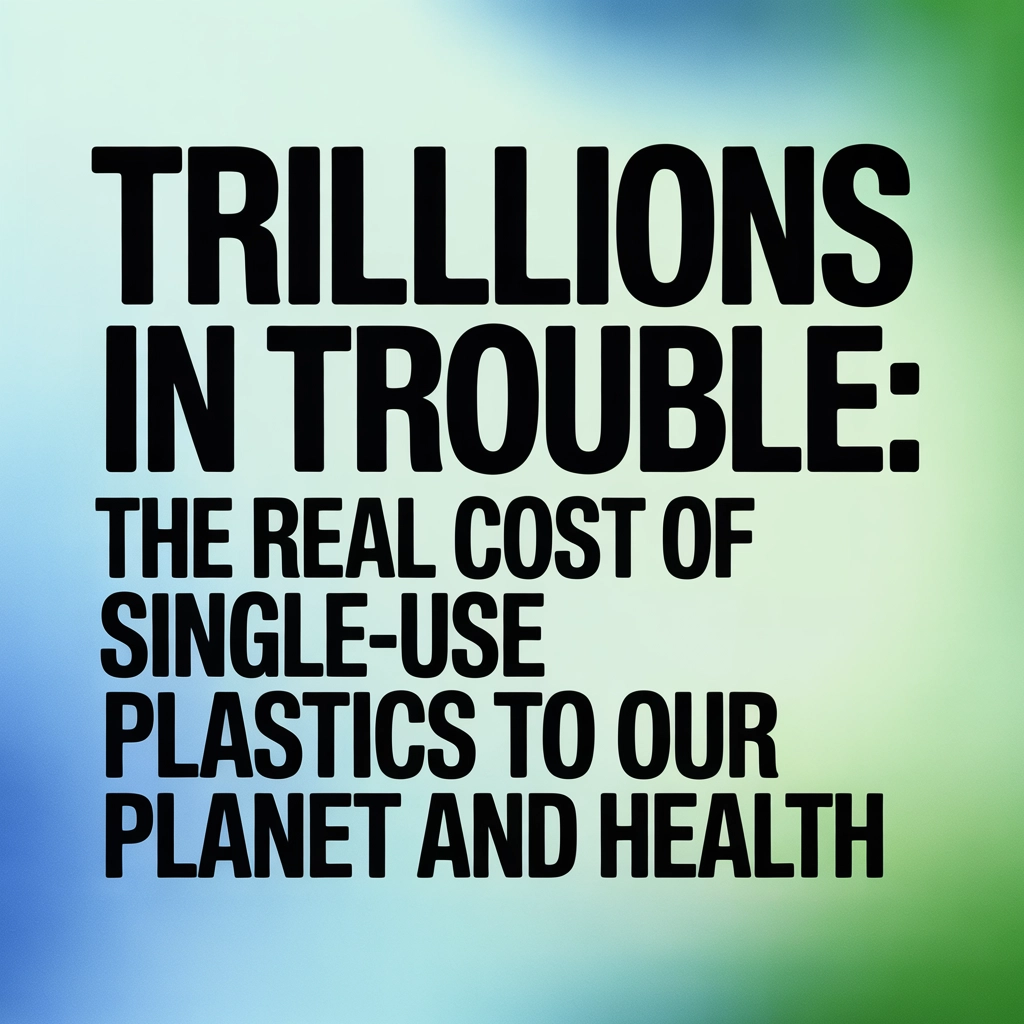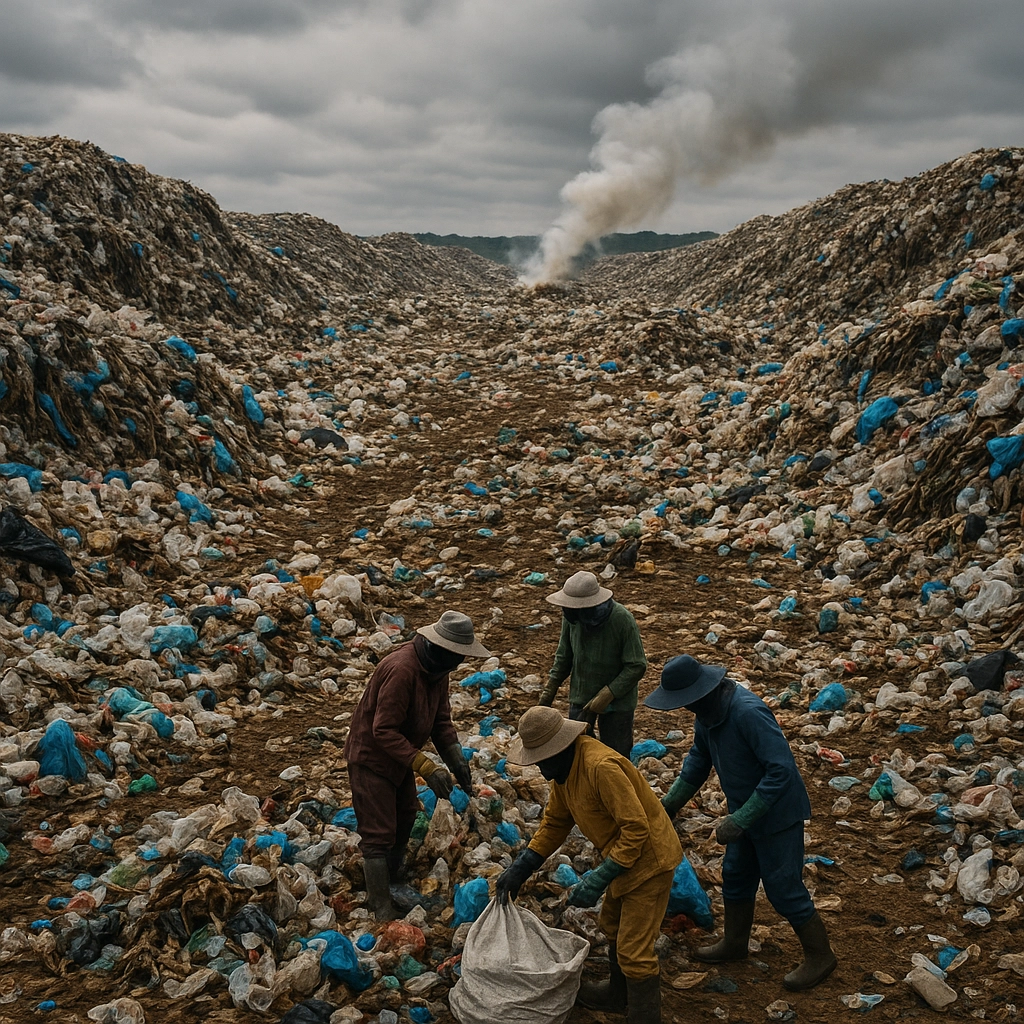
Plastic: Convenience at a Catastrophic Cost
Single-use plastics have become the symbol of modern convenience. Yet, beneath their disposable allure lies a global crisis with a staggering annual price tag. The real cost? A jaw-dropping $1.5 trillion every year in global health impacts alone—before factoring in environmental devastation, climate disruption, and the economic toll across societies.
Let’s break down how these everyday items create such an astronomical bill, and why the world can’t afford to ignore this growing emergency.
The Hidden Health Crisis
When people think about plastic pollution, beach litter or floating garbage patches probably spring to mind. But the personal health impact of single-use plastics is equally alarming, and most of it happens out of sight.
Chemical Soup
Plastics contain more than 16,000 chemicals, including stabilizers, fillers, dyes, flame retardants, and more. Many present serious health risks, with proven links to:
- Increased miscarriage and premature birth rates
- Certain childhood cancers
- Fertility and reproductive problems
These issues are only the tip of the iceberg. The widespread use of plastics means most people are exposed daily—at home, work, or even through the food and water they consume.
Microplastics in Our Bodies
Plastics break down slowly into microplastics and nanoplastics—particles so tiny they're invisible to the naked eye. Recent studies have found traces of these particles in human blood, organs, and even bone marrow. While the long-term effects remain under study, researchers warn of potential cellular damage, hormonal disruption, and increased vulnerability to diseases.
Air Pollution from Production
Plastic manufacturing is a climate and public health menace. Each year, the plastic industry emits over 2.2 billion US tons of CO₂—more than the total annual emissions of many major countries. These emissions contribute to lung diseases, aggravate allergies, and further stress already fragile healthcare systems.

Environmental Catastrophe: From Landfill to Ocean
Single-use plastics are the poster child of throwaway culture. But their lifespan in nature is anything but short.
The Longevity Problem
A plastic bag may be used for 12 minutes, but it can linger in the environment for up to 1,000 years. Most single-use plastics are non-biodegradable, persisting and polluting far beyond our own lifetimes.
Oceanic Invasion
Every year, between 8 and 13 million metric tons of plastic pour into the world’s oceans. Once there, plastic never truly disappears—it breaks into ever-smaller pieces, contaminating aquatic food webs and sinking to the seabed.
It’s estimated that 80% of all marine debris is plastic. The Great Pacific Garbage Patch—a swirling plastic mass twice the size of Texas—holds over 87,000 metric tons of debris, but it’s only the most famous of many such patches worldwide.
Wildlife pays a terrible price: about 90% of seabirds now have plastic fragments in their stomachs, leading to mass die-offs, stunted growth, and population declines across countless species.
On Land and in Soil
Plastic pollution isn’t just an ocean problem. Discarded plastics contaminate farmland, forests, and urban environments. Microplastics enter soils, affecting crop yields, soil biodiversity, and even ending up in the food we eat.
Fueling the Climate Crisis
Many people underestimate the role of single-use plastics in accelerating climate change.
Plastic’s Carbon Footprint
From extraction to disposal, plastic’s lifecycle is entwined with fossil fuels:
- Drilling and transporting oil and gas for plastics produces 1.5–12.5 million metric tons of greenhouse gases annually.
- Refining plastic spikes that number by another 184–213 million metric tons.
- Transport emissions add yet another climate penalty.
Landfills, Methane, and Deforestation
A huge portion of plastics end up in landfills, which account for over 15% of methane emissions—a greenhouse gas far more potent than CO₂. Worse, the plastic industry’s thirst for fossil fuels drives deforestation, releasing another 1.6 billion metric tons of carbon dioxide.
The ultimate irony? Plastic waste is now threatening the oceans’ ability to absorb carbon—a dangerous feedback loop that could tip global climate systems past the point of no return.

Economic Wreckage: The Bill We All Pay
The financial costs of single-use plastic pollution are spread across nearly every sector.
Waste Management and Clean-Up
Managing plastic waste costs at least $32 billion annually. That’s just for collection, sorting, landfilling, incinerating, or attempting to recycle it. Cleanup efforts—by governments, environmental groups, and local communities—require another $15 billion per year.
Impact on Coastal Economies
Plastic pollution isn’t just an eyesore for tourists—it’s a financial nightmare. For example, GDP losses in the fishing, tourism, and aquaculture sectors due to plastic pollution hit up to $7 billion in 2018 alone.
These costs are disproportionately shouldered by coastal regions and developing nations, whose economies are often least able to absorb such shocks.
Recycling: Fact vs. Fiction
We often hear recycling is the answer. In reality, it’s more myth than solution:
- Only 14% of plastic packaging is collected for recycling globally.
- Fewer than 10% of all plastics are successfully recycled.
- Most plastics are chemically complex, making effective recycling expensive or unfeasible.
The bulk of single-use plastics still end up buried, burned, or lost in the environment—polluting for generations.
The Social Justice Dimension
Plastic pollution is as much a human rights issue as it is an environmental one.
Exporting the Problem
High-income countries frequently ship plastic waste to less developed nations, overwhelming their infrastructure and leaving communities awash in foreign trash. Informal waste workers, often children, are exposed to hazardous conditions and toxic fumes during collection and processing.
Polluting Poorer Communities
Plastic production and waste incineration facilities are disproportionately located in low-income areas, increasing health risks for residents and driving higher rates of disease and economic instability.
The Trillion-Dollar Wake-Up Call
The $1.5 trillion annual cost of single-use plastics isn’t just a statistic—it is an urgent call to action. It takes into account:
- Health costs from toxic exposure, respiratory illnesses, and microplastics
- Environmental damage to marine and terrestrial habitats
- Climate impacts from greenhouse gas emissions throughout the plastic life cycle
- Lost economic productivity in tourism, fisheries, and agriculture
- Inequities faced by vulnerable communities at every stage of the plastic supply chain
What Can Be Done?
Solutions demand ambition and collaboration:
- Reduce plastic production at the source, with bans or levies on single-use items.
- Invest in alternatives: biodegradable materials, reusable containers, refill systems.
- Increase transparency and compliance in waste management—particularly in exporting and importing countries.
- Support affected communities with direct aid and environmental justice initiatives.
- Amplify education and advocacy to drive lasting behavior change.
At Team Britannia PR, we’re committed to championing sustainability and building a cleaner, fairer future for all. To learn more about our initiatives and how you can get involved, visit our sustainability page.
The true price of single-use plastics is one the planet cannot continue to pay. Every step toward change counts—not just for the environment, but for our health, our economies, and our communities worldwide.
